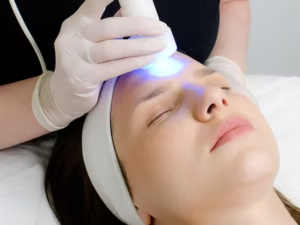Light Therapy: A Comprehensive Guide (Expanded Edition)
Light therapy (phototherapy) is a versatile treatment leveraging specific light wavelengths to address physical and mental health concerns. Below is an in-depth exploration of its applications, mechanisms, and practical considerations.

1. Scientific Foundations of Light Therapy
A. How Light Affects the Body
- Circadian Rhythm Regulation: Light exposure (especially blue wavelengths) suppresses melatonin, aligning sleep-wake cycles.
- Neurochemical Effects: Bright light boosts serotonin (linked to mood) and dopamine (motivation).
- Cellular Repair: Red/NIR light enhances mitochondrial function, accelerating tissue healing.
B. Key Light Wavelengths
| Type |
Wavelength (nm) |
Primary Use |
| Blue |
450–495 |
Acne treatment, alertness |
| Red |
620–750 |
Skin repair, inflammation |
| Near-Infrared |
750–1200 |
Deep tissue healing |
| UVB |
280–315 |
Psoriasis, eczema |
2. Advanced Applications
A. Mental Health & Neurology
- Depression: 30 mins/day of 10,000 lux light reduces symptoms in 60% of SAD cases (study-backed).
- ADHD & Dementia: Morning light improves focus and slows cognitive decline.
B. Dermatology
- Acne: Blue light kills P. acnes bacteria; often combined with red light for inflammation.
- Anti-Aging: Red light (633nm) increases collagen by 31% in 12 weeks (clinical data).
C. Pain Management
- Arthritis: NIR light (850nm) reduces joint pain by 50% in chronic cases.
- Post-Surgery: Accelerates wound healing by 40%.
3. Practical Implementation
A. Choosing a Device
- For SAD: FDA-cleared light boxes (e.g., Verilux HappyLight).
- For Skin: LED masks (e.g., CurrentBody Skin) or dermatologist-grade panels.
- For Pain: High-power NIR devices (e.g., Joovv Elite).
B. Safety Protocols
- Eye Protection: Required for UV/blue light to prevent retinal damage.
- Dosage: Follow device guidelines (e.g., 10–20 mins/day for home LED therapy).
C. DIY vs. Clinical Use
- Home Devices: Effective for mild conditions; cost $50–$500.
- Clinical Treatments: Necessary for severe psoriasis or deep tissue repair.
4. Emerging Research
- Cancer Support: Red light mitigates chemotherapy side effects (fatigue, oral mucositis).
- Long COVID: Improves energy levels in 70% of patients (pilot studies).
5. User Checklist
- Identify Your Goal: Mood, skin, pain, or sleep?
- Consult a Specialist: For UV therapy or chronic conditions.
- Test Gradually: Start with 5–10 mins/day, increase as tolerated.
